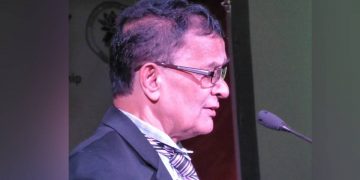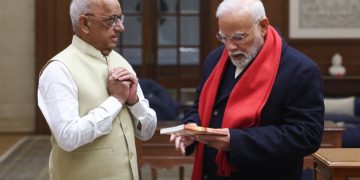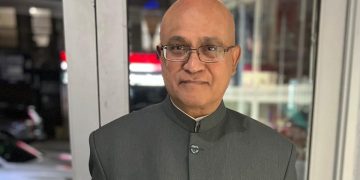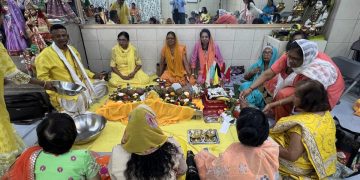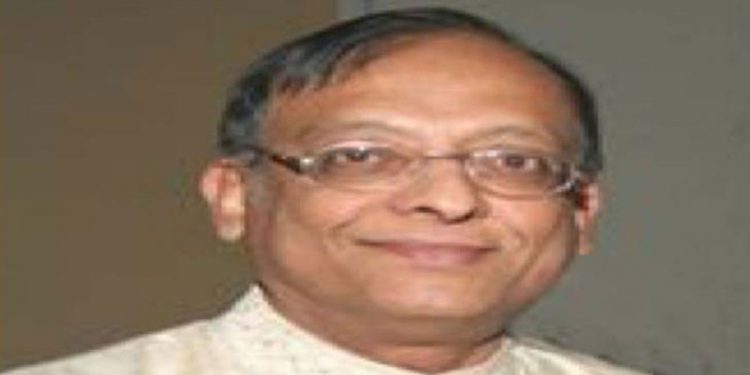Indian money might run low but it doesn’t run out. Indians believe in education and we do well in education.
We Indians in Trinidad (and in Guyana too) have heard these myths and said them and believed them too. We Indians will survive and thrive no matter how hard the situation. We worship education and have a fabulous record of achievement in education.
Sadly, and I mean that, it just ain’t so. These are myths that we Indians have inflicted on ourselves and others have gladly accepted as it gives them reason to believe such an enterprising and successful people don’t need any help from taxpayer funds.
So what’s the proof of such a claim for Trinidad? I quote some indisputable facts and an investigation I did into the fate of my home village of Mora Dam Road, Penal.
About ten years ago I saw a shocking statistic from a government agency in Trinidad that the country had 300,000 people living under the poverty line, most of them from the rural areas. I hope you catch the phrase “most of them from the rural areas” which is a code for Indians who live mostly in rural areas.
I estimated that at least 200,000 of the 300,000 would be Indians living under the poverty line and definitely not making it, their Indian money clearly running out. That would mean 40% of the 500,000 Trinidad Indians were living in dire poverty, hardly the picture of an economically successful people. I understand the figure of Trinis living in poverty has gone down to 250,000 but I doubt that makes much of a difference for the fate of the bottom tier Indians.
Next, who remembers the study done my economist Trevor Sudama where he said that black people in Trinidad were doing better than Indians in all income levels except the lowest. It means that Indians dominated the lowest income block and none other in comparison to black people, who were and are getting the bulk of the government well paid jobs for life.
When we look at the Trinidad Indian diaspora abroad of 300,000 plus compared to the 500,000 Indos remaining in Trinidad, an obvious question arises. If those Indians were doing well in Trinidad, why did a full third of the total Indo Trinis choose to leave the country never to return? Successful and prosperous people do not desert the land of their birth. And if Trinidad has no serious racism and discrimination against Indians as many declare, what else but economic failure would be the driver for so many Indo Trinis?
Knowing that these points would be debatable, I decided to do a survey of the children of my generation in my home village of Mora Dam Road, Penal as the proof of the pudding. I invite readers to do the same for their villages or towns and make their own conclusions.
I counted 42 children from 13 homes in Mora Dam Road who were growing up with me in the sixties and seventies of the last century and looked at their fate in four categories.
Category 1: did they get a good education, meaning at least completion of primary school and secondary school at a decent college with acceptable GCE passes that could get them a real job, or a trade certificate.
Category 2: Did they get a reasonable well paying permanent job?
Category 3: Did they get what would be considered a good life?
Category 4: Did they migrate to get away from Trinidad or did they stay in the homeland?
The results speak for themselves.
I was the only one who went to a “good” school Naparima College and got acceptable passes at ordinary level and advanced level, and went to university from that Mora Dam Road base. One person learned a trade and became an electrician. And that was it.
All of the others went to primary school at least to Standard Five but few went on to Standard Seven. That was the end of education for most, though one or two went to junior secondary school or to private secondary schools without getting acceptable passes. Four or five went abroad in later years and picked up some tertiary education.
I don’t call two out of 42 success in education for the children of Mora Dam Road, Penal. All the parents and most of the children believed in education, though most children did not get it.
The good job category is just as bad. Five of the kids did get decent jobs in TTEC, the only real employer in the area. I went on to teaching secondary school, and about four others picked up reasonable lower level jobs while they lived at Mora Dam Road. Let’s count 10 out of 42 getting a tick in the good jobs region, again hardly anything to boast about.
The category of good life was a little better. I would say at least 16 of the 42 achieved the good life remaining in More Dam Road or moving somewhere else in Trinidad. That’s 38%, no more.
As for migration, almost every house in Mora Dam had at least one child migrate abroad, four from my house including myself, two each from our two nearest neighbours, thirteen total to my knowledge. That’s 31% migration.
Is Mora Dam Road an isolated, untypical community or is it basically the same as many Indian communities in deep south, central and east Trinidad? Many of the Trini Indos here in Canada tell me their home villages in the sixties and seventies were echoes of Mora Dam Road. Where they toiled and hoped in vain, where most did not get the good education, good job and good life, and where their Indian money ran out and from whence they also ran out without regret.
For many of us who have left Trinidad, distance does not lend enchantment to the view of our home villages in our youth. The rural areas where most Indians lived were abandoned by the British colonialists, and the black governments of independence did basically the same. Indians tried to build good lives with nothing but our ancient culture and a tremendous drive, but we took casualties, too many casualties.
We have to take off the rose coloured glasses on that era of the sixties to the eighties. Have things changed for Indians for the better in the last thirty years when I was absent from Trinidad? I really can’t say. I don’t have the info.
Somebody prove me to be an old fool who doesn’t know what he is writing about and I will be grateful. But I ain’t coming back, and neither are the 270,000 Indo Trinis in North America, whatever the reasons that caused their departure. Too much time has passed and we can’t go back to the old hometown no more.
















